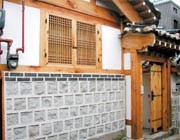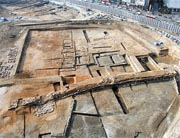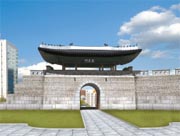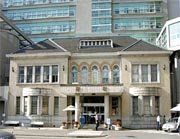Ancient sites get historic makeovers

The quaint and traditional Bukchon Hanok Village is a historically preserved settlement that aims to educate visitors on what life was like during the Joseon Dynasty.
Long ago, this village housed the royal family and high-ranking officials, who lived in traditional Korean houses, called hanok. Today, it offers a window into that past, as it has been preserved for roughly 600 years. Last August, it was awarded the Unesco Asia-Pacific Heritage Award, which recognizes efforts to restore important structures.
Located between the Gyeongbuk and Changdeok palaces, Bukchon Hanok Village features a cultural center that hosts various events during the fourth week of every month. Activities include classes focused on making hanji (traditional paper) and those that teach participants about traditional liquor. There are also restaurants nearby.
The site is located just a short walk from Insadong and Samcheong-dong.

Gwanghwamun Plaza
After 15 months of construction, Gwanghwamun Plaza was finally revealed to the public in August.
The main street in this area was reduced from 16 lanes to 10 to accommodate the new plaza, which measures 34 meters (112 feet) wide and 557 meters long.
The site seeks to highlight Korea’s history and culture. Stones that line the plaza serve as a time line of Seoul’s past, bearing engravings that detail important events in history.
There’s also a bronze statue of Admiral Yi Sun-sin, who defeated a Japanese fleet of 133 ships with only 12 of his own during a battle in the Myeongnyang Strait.
A statue of King Sejong the Great, which stands 10.4 meters high, represents another key figure in Korean history. Sejong was the fourth king of the Joseon Dynasty and invented the Korean alphabet, Hangul.
A sundial, a rain gauge and other items that document King Sejong’s achievements surround the statue.

History and culture park
The Dongdaemun History and Culture Park, which is being built on the former site of the Dongdaemun Sports Complex, partially opened to the public in October.
When fully complete, the park will showcase a variety of traditional structures and relics in state-of-the-art, modern cultural facilities. The project also includes the restoration of castle walls in addition to the building of a history museum and the Dongdaemun Stadium Memorial Museum.
Researchers have found numerous cultural relics in the area, including an artifact that was once used to draw water from the inner parts of the wall that surrounded Seoul during the Joseon Dynasty. In addition, researchers excavated about 1,000 pieces of white porcelain and glazed ceramics that were used during the Joseon Dynasty and the Japanese imperial rule of Korea.
The budget for the project is 375.5 billion won ($317.9 million), and officials expect construction to wrap up in 2011.

Donuimun
One of the city’s four main gates, Donuimun was known as the great western gate and signifies loyalty.
The structure was demolished in 1915 but will soon be restored, ranking as the last of the four to be rebuilt.
Officials will build the gate at its exact original location in front of Kangbuk Samsung Hospital. The city has already purchased the land at the Jeong-dong intersection and hopes to fully rebuild the gate by 2013.
Officials also plan on restoring several sections - a total of 2,175 meters - of the old fortress wall, a project that’s expected to be completed in 2013 as well.
Under the project, sections of the wall near Inwang (835 meters), Mount Namsan (753 meters) and the former Dongdaemun Stadium (263 meters) will be restored.
After the project is completed, the city government hopes that Unesco will give the gate World Heritage status, along with the Mount Bukhan fortress, Hongjimun and Tangjimun.

Gyeonggyojang
This building was the stage for the Korean provisional government’s final movement against Japan. It is currently being restored and is scheduled to open again in November 2011.
The idea to redevelop the site gained traction last April, when the owners of the Gyeonggyojang building - Samsung Life Insurance and Kangbuk Hospital - decided to restore the entire structure.
The building is located in front of the Kangbuk Samsung Hospital in Seoul’s Jongno area. This was where Kim Gu, the last president of the provisional government of Korea, worked while in office from 1945 until he was assassinated in 1949.
The two-story building was constructed in 1939. Samsung bought it in 1967, and the structure is now being used by the hospital.
The second floor, which was once an office, is a commemoration room. The remaining space houses the hospital’s pharmacy and is also being used for storage.
In an attempt to preserve and revive some of the city’s most beloved historical and cultural sites, Seoul has recently launched numerous renovation projects focusing on older buildings and structures. The city also is erecting new exhibits to commemorate the past.
For years, Korea paid scant attention to its history, seemingly more embarrassed by it than proud of it. But now, after industrializing in record time, it is making a concerted effort to not only highlight its heritage, but also celebrate to it. Following are some of those efforts.
By Lee Ji-eun










with the Korea JoongAng Daily
To write comments, please log in to one of the accounts.
Standards Board Policy (0/250자)